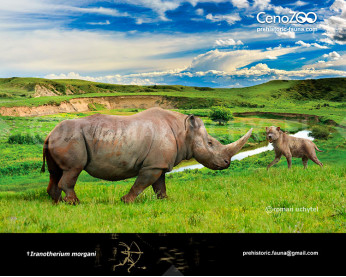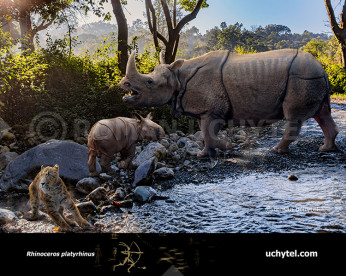Elasmotherium
8484Elasmotherium (Elasmotherium Fischer, 1808)
Order: Perissodactyla
Family: Rhinocerotidae
Size: 4-4,5 m in length, 230 cm in height, 3000-4500 kg of weight
Time period: the Late Pliocene - Pleistocene (Eurasia).
Typical representative: Elasmotherium sibiricum Fischer, 1809
Elasmotherium is the largest species of rhinoceroses that lived from Pliocene till Pleistocene. It reached 6 meters in lengths and 2.5 meters in heights, and weighed up to 5 tons. Its main distinction from other rhinoceroses was a large dome-like protuberance on its forehead, probably with an over 1.5-meter long thick horn. Elasmotheria were widespread on the territory from Western Europe to Eastern Siberia.
Elasmotherium ate grass and roots on river and lake banks, such as highly-nutritious starchy roots of sedge, reed mace and cane. In times of local fodder shortages, the animal could walk long distances through elevated steppe strips from one river system to another or even migrate to the south. It is indicative that the northernmost fossils of Elasmotherium are found in river valleys, and not in steppes, as those of purely herbivorous horses or woolly rhinoceroses. Their root-based diet is also evidenced by their extremely hypsodontic teeth, which ensured protection from abrasives on this type of food, such as sand, dirt, etc.
As evident from the brain reconstruction, Elasmotherium remained on a quite primitive level of organization. Large olfactory lobes were located in front of small and poorly-developed frontal hemispheres. Other rhinoceroses advanced their brains as early as Miocene and developed quicker orientation and better mobility which are characteristic for modern species. Elasmotherium was inferior to them; woolly rhinoceros and later species of rhinoceros had better reactions, and were smarter, faster and more aggressive.
Elasmotherium (Elasmotherium Fischer, 1808)
Order: Perissodactyla
Family: Rhinocerotidae
Size: 4-4,5 m in length, 230 cm in height, 3000-4500 kg of weight
Time period: the Late Pliocene - Pleistocene (Eurasia).
Typical representative: Elasmotherium sibiricum Fischer, 1809
Elasmotherium is the largest species of rhinoceroses that lived from Pliocene till Pleistocene. It reached 6 meters in lengths and 2.5 meters in heights, and weighed up to 5 tons. Its main distinction from other rhinoceroses was a large dome-like protuberance on its forehead, probably with an over 1.5-meter long thick horn. Elasmotheria were widespread on the territory from Western Europe to Eastern Siberia.
Elasmotherium ate grass and roots on river and lake banks, such as highly-nutritious starchy roots of sedge, reed mace and cane. In times of local fodder shortages, the animal could walk long distances through elevated steppe strips from one river system to another or even migrate to the south. It is indicative that the northernmost fossils of Elasmotherium are found in river valleys, and not in steppes, as those of purely herbivorous horses or woolly rhinoceroses. Their root-based diet is also evidenced by their extremely hypsodontic teeth, which ensured protection from abrasives on this type of food, such as sand, dirt, etc.
As evident from the brain reconstruction, Elasmotherium remained on a quite primitive level of organization. Large olfactory lobes were located in front of small and poorly-developed frontal hemispheres. Other rhinoceroses advanced their brains as early as Miocene and developed quicker orientation and better mobility which are characteristic for modern species. Elasmotherium was inferior to them; woolly rhinoceros and later species of rhinoceros had better reactions, and were smarter, faster and more aggressive.

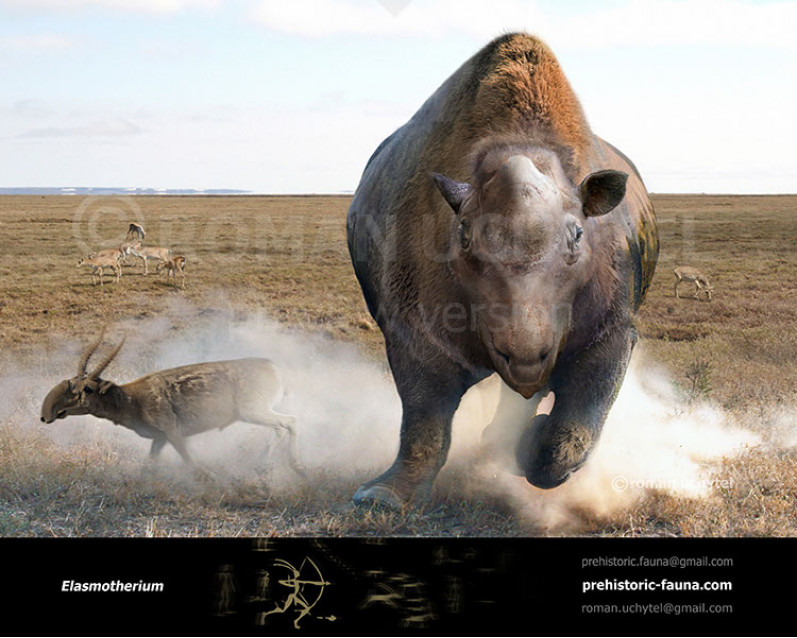
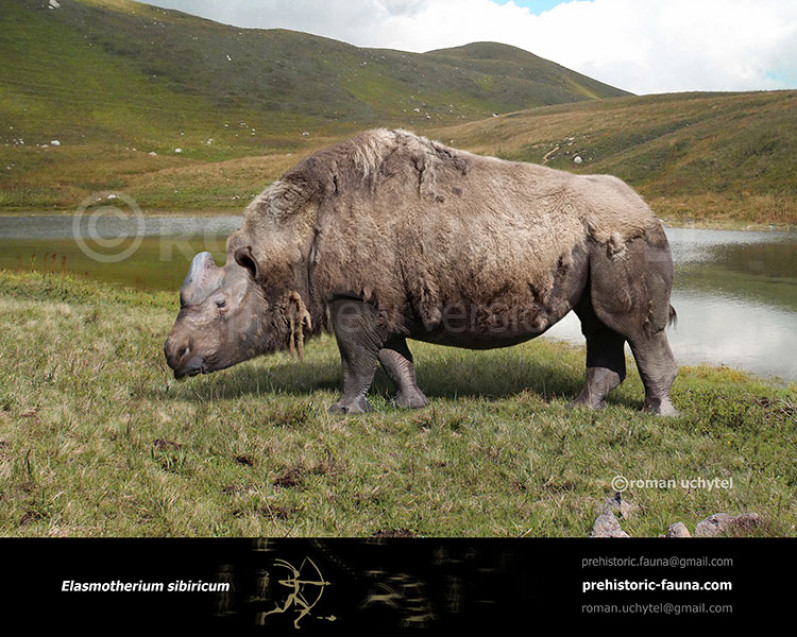
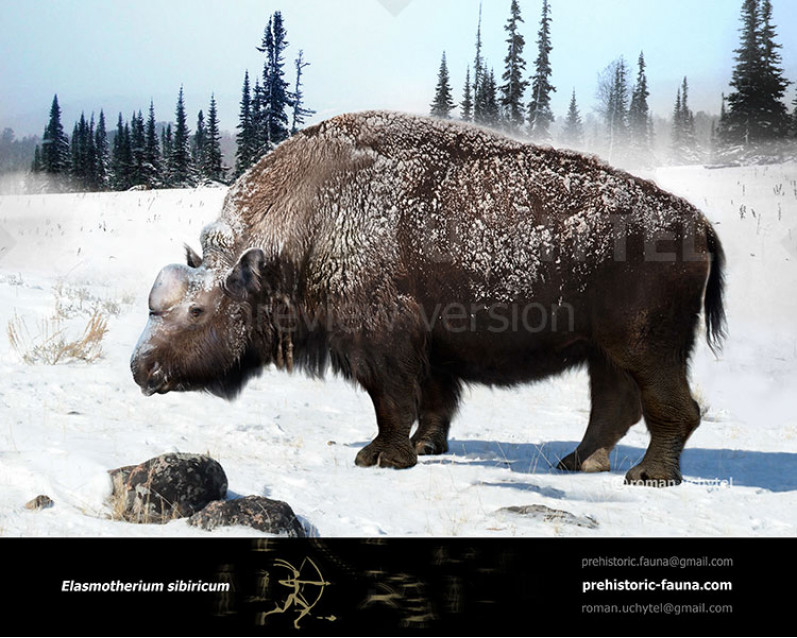
-my-version-797x638.jpg)
1-797x638.jpg)
a-797x638.jpg)
-797x638.jpg)
1-797x638.jpg)



-my-version-70x56.jpg)
1-70x56.jpg)
a-70x56.jpg)
-70x56.jpg)
1-70x56.jpg)
-346x277.jpg)
1-346x277.jpg)
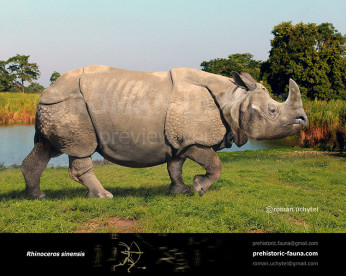
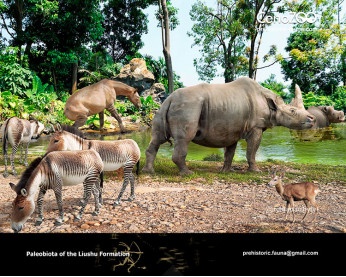
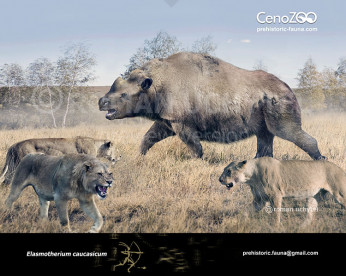
-346x277.jpg)
